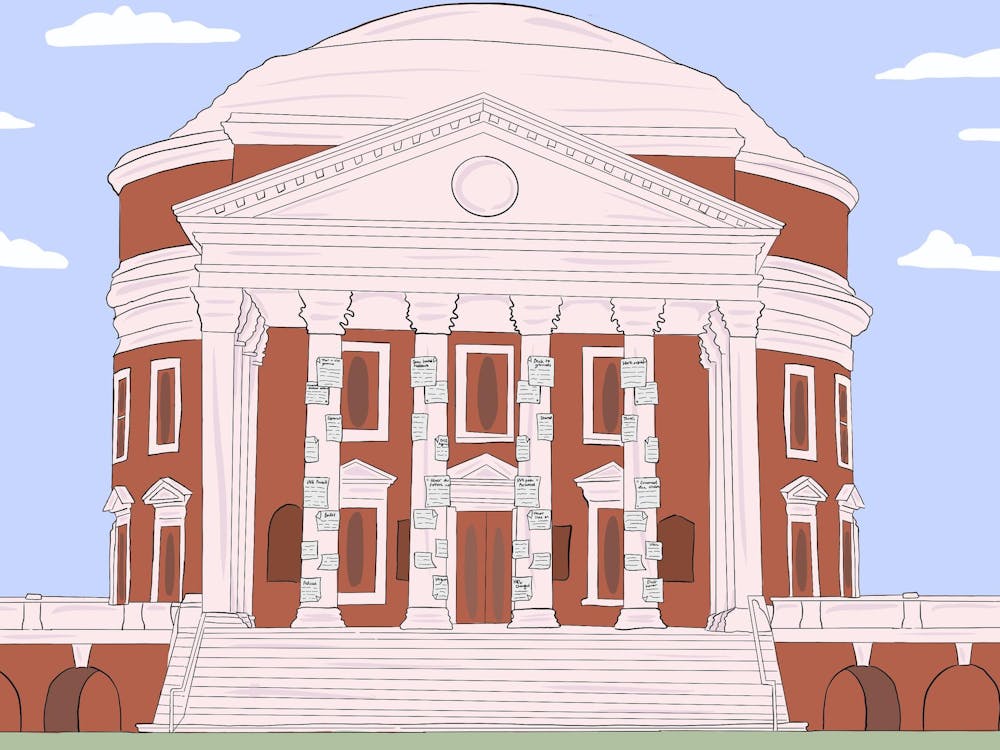The University of Virginia Emergency Department, I have found, is an appropriate place to think about some of the most pressing issues in health care. Through my work as an ER scribe, I have been able to observe the relationship that undergirds much of health care: the connection (or lack thereof) between doctor and patient.
The doctor-patient relationship “has been and remains a keystone of care,” a 1999 study from the National Institutes of Health notes. The corporatization of health care practices threatens the integrity of this relationship, the study suggests. As medicine is becoming more responsive to the imperatives of business — hospitals are revenue generators, after all — doctors are taking on higher patient loads, with decreased time for each patient and an emphasis on the bottom line. This trend toward assembly-line care is particularly pronounced in larger hospital complexes.
Psychologists such as Daniel Goleman have written about the deleterious effects of this “accountant’s mentality” in medicine. Goleman argues that a strong relationship between doctor and patient can help reduce physiological harm — by reducing levels of stress hormone that results from emotional distress, for example.
In the U.Va. Emergency Department, you can see the “accountant’s mentality” in full force. More than any other specialty, emergency medicine places an emphasis on brisk, efficient care. We are the place where everyone in the area goes for their most unexpected and serious ailments. We take on a wide variety of illnesses, patch the patients up, and send them home — or to the next doctor. The faster we can get a patient in and out of the ER, the faster the next one can receive treatment.
For these reasons, the ER might be one of the best places to observe poor doctor-patient relationships. Each time I work, I notice examples of neglected patients. Nearly every ER shift I see visibly frustrated doctors cut off patients mid-sentence because they took too long to answer a question and distracted physicians too busy thinking about their next case to worry about the one in front of them.
So how do we reconcile the need for doctor-patient interactions with the need for speedy patient turnover? I asked Dr. Pamela Ross, former professor of emergency medicine at the University. She offered a compromise: doctors need to learn to establish quick connections with their patients. “Twenty minutes may not be much time in the grand scheme of things,” she says, “But in the ED, it’s a lot.” If a doctor knows how to walk into a room, greet a new patient and quickly establish rapport and trust with that person, he or she can ensure many of the psychological and physiological benefits of a good doctor-patient connection while still completing the interview in the same amount of time as your hurried, less socially competent physician.
Excellent people skills are not acquired overnight and many people seem naturally gifted at smooth social interactions. It’s unreasonable to ask emergency physicians to meet such standards overnight. But we can move doctors in this direction simply by emphasizing this skill set. Currently, medical education so heavily emphasizes the need for fast and accurate diagnosis and treatment that it blocks out room for attention to “softer” people skills. In a teaching hospital like the University’s, an attending physician like Ross could make a statement by emphasizing doctor-patient connection alongside accuracy and efficiency. Everyone in the vicinity — new resident doctors, nurses, wide-eyed medical students and even medical scribes like myself — might be influenced by such a reordering of priorities.
In the long-term, incorporating people skills into formal medical education could ensure that future doctors receive their degrees with a certain level of education in doctor-patient social connections. With programs like the Compassionate Care Initiative, our own nursing school is incorporating such skills into its coursework. In a similar vein, our medical school has recently altered its curriculum to get students out of the classroom and into a patient environment sooner.
In 2010, the Association of American Medical Colleges predicted that the United States would face a shortage of more than 130,000 doctors by 2025. Several reasons account for this doctor shortage. First, the Affordable Care Act is upping the numbers of insured Americans, and thus increasing the number of patients in our healthcare system. Second, the baby boomers are approaching retirement age and are beginning to require more comprehensive care. Absent a serious rethinking of how we provide medical care — such as relying more heavily on nurse practitioners — or significant leaps forward in medical technology, it seems as if doctors will need to care for more and more patients in the near future. Existing problems with doctor-patient relationships could become exacerbated because of a desire to promote efficiency. In the face of these pressures, it is critical that doctors, medical schools and departments such as our own ER keep the patient-doctor relationship in mind. Incorporating “soft” skills into the medical school curriculum could be a fine place to start.
George Knaysi is an Opinion Columnist for The Cavalier Daily. He can be reached at g.knaysi@cavalierdaily.com.






